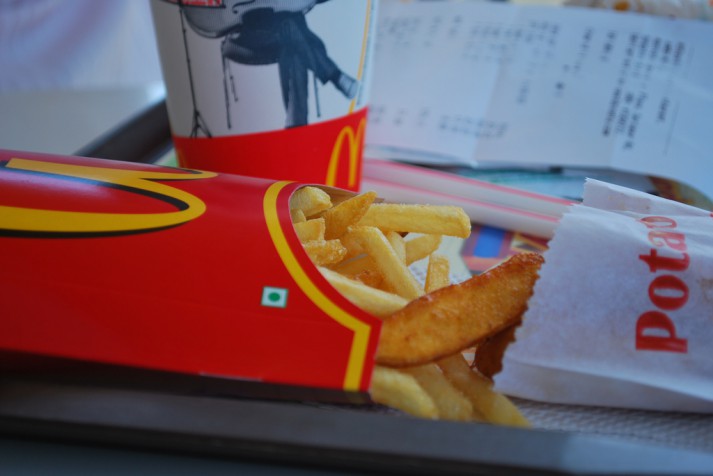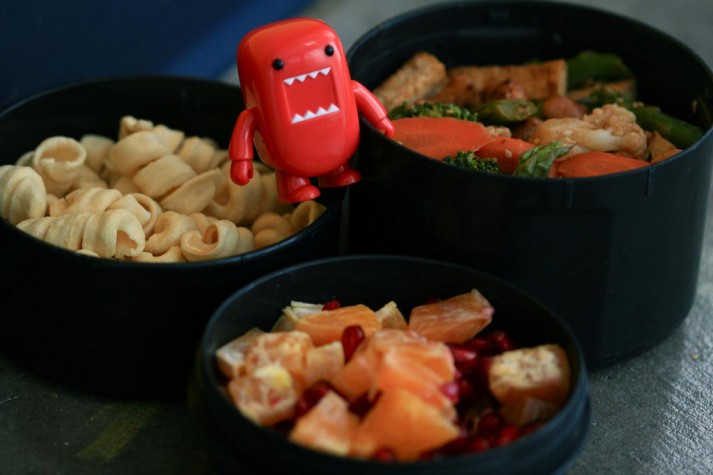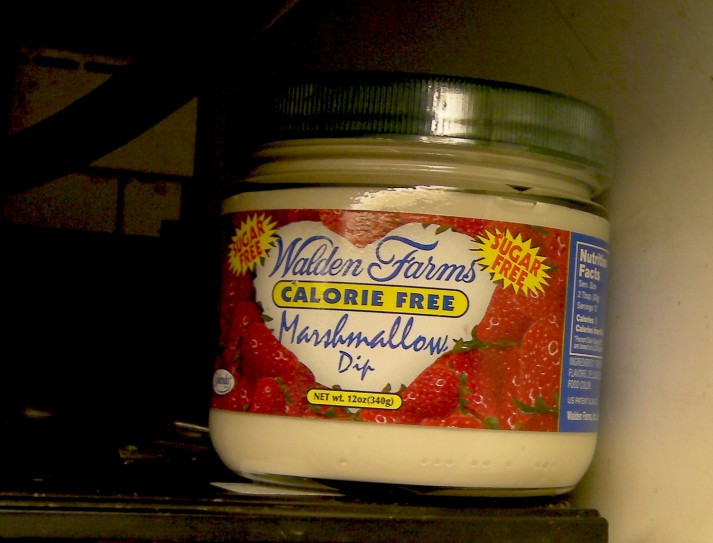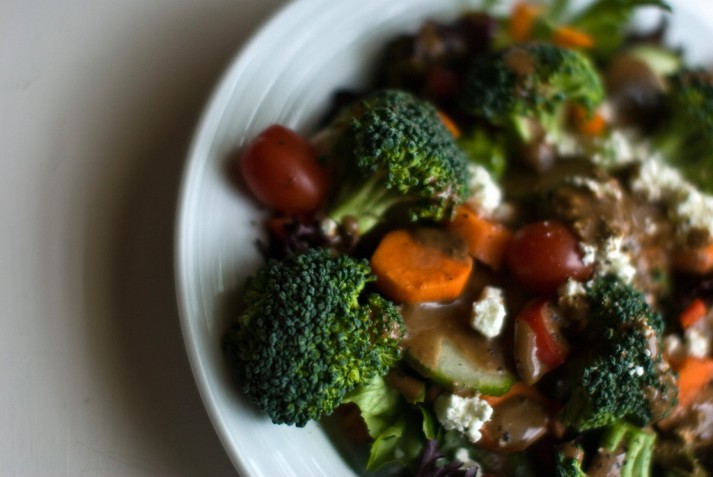This whole “nutrition thing” can be a confusing, contradictory mess.
Depending on who you talk to, you could get a few different answers on how to approach eating:
- “I’m Paleo, and only eat meat, veggies, fruit and nuts – boo grains!”
- “Well I just eat based on my macros (Protein, Carbs, Fats) – Paleo is ridiculous!”
- “Whatever fools – a calorie is a calorie. I can lose weight just eating less.”
- “I’m in incredible shape and all I eat is pizza. Hell, I’m a freaking wizard!”
Whoever you talk with, you can get a pretty different picture of what it means to “eat healthy.” To make things more confusing, each of these perspectives are backed up with plenty of anecdotal evidence and scientific studies.
I wanted to cover our thoughts (and yes, my humble nerdy opinion) on this great nutrition debate, starting with the question:
“Is a calorie really a calorie?”
Get your Nerd Fitness Starter Kit
- The 15 mistakes you don’t want to make.
- Full guide to the most effective diet and why it works.
- Complete and track your first workout today, no gym required.
What is a Calorie?
Get your Nerd Fitness Starter Kit
- The 15 mistakes you don’t want to make.
- Full guide to the most effective diet and why it works.
- Complete and track your first workout today, no gym required.

A calorie, by its simplest definition, is a unit of energy.
It’s equivalent to 4.184 absolute Joules (which is different from 1.21 Gigawatts).
If you really want to nerd out, here’s what that means: 1 food calorie equals 1 kilocalorie, which is the amount of energy needed to raise 1 gram of water from 15 to 16 °C.
So, in this sense, just like a pound is a pound and a kilogram is a kilogram, a calorie is a calorie.
But…that really doesn’t help us at all. What we’re really interested in is:
Do different types of calories affect our body differently?
- Is 1000 calories of twinkies the same exact thing as 1000 calories of grass-fed steak and vegetables? This man lost weight on the Twinkie Diet!
- Does your body process those foods differently, or is it as simple as “energy in, energy out?”
- Does the type of food you eat affect your health outside of just weight loss (or muscle gain)?
These questions usually provoke a controversial and heated debate, because we say things like “a calorie isn’t a calorie” or “energy in is energy out” and we all mean different things.
Shockingly, on the internet this has generally devolved into a lot of name calling and angry debates between people who are 100% sure (and will link to any number of studies to prove) their method is the correct one.
But you know that the internet is for people to argue incessantly about anything and everything, so you’re instead here on Nerd Fitness because you’d like to learn something. Or maybe you just like my witty puns and clever jokes?
No? Okay!
So let’s dig into all of this stuff. To start, let’s establish some common ground.
Nutrition 101

Before we dig into the specifics of how calories work, let’s get one thing straight. No matter what your “nutrition philosophy,” how you eat will be responsible for 80-90% of your success or failure.
Long story short: the food you choose (and how much) matters.
As we say in the Rules of the NF Rebellion, you can’t outrun your fork. You could train five days a week, and with an awful diet, you won’t see any transformation in your body…which I’m guessing is a part of the reason you’re training to begin with!
Sure, you could certainly have improved cardiovascular health from running a lot, but if your goal is to transform like your boy Optimus Prime, how you fuel your body will play the starring role.
Exercise is the supporting cast.
When it comes to PURE weight loss (not factoring in muscle vs. fat, body composition, overall health, physical performance, or energy levels), eating fewer calories than you burn every day will be the chief part of the equation.
Eat less than you burn: lose weight.
However, we’re FAR more concerned with how you look, how you feel, if you are healthy, if you are getting stronger, if your doctor gives you a clean bill of health, and if you live a long life full of activity, exercise, and video games. We want to do everything in our power to help you avoid things like heart disease and type-2 diabetes – diseases that end Game of Life too early.
So, as you’ll see below, we need to focus on the type you foods you eat along with how much you eat.
Ultimately, our goal is to turn you into a freaking superhero.
Let’s take a look at the first big part of the equation.
Are all calories created equal in weight loss?

Let’s say you’re a typical American dude or dudette (do people use that term anymore? didn’t think so), and you eat anywhere between 3000 and 3500 calories per day of whatever the hell you want. And you want to lose some weight.
Or maybe you eat way more than that, or you have no clue how much you eat, but you know you need to lose some weight.
So you set a calorie goal of 2200 calories and you eat less. You don’t change WHAT you eat, you simply change the proportions of what you eat.
And look at that, you start to lose weight. You might be miserable due to severely restricting your body from the normal amount of calories it expects to eat, but it’s a step in that direction.
When we consume roughly 500 less calories per day on average, burn 500 extra calories per day through exercise, or some combination of the two, you will lose roughly 1 pound (.45 kg) of body mass per week.
As pointed out on Examine.com, “a net negative energy balance…is responsible for weight loss.”
Notice we said “weight loss” and not “fat loss.”
Unfortunately, this is where things become problematic – many people stop here and assume that you should simply start to eat less, case closed.
But here’s the thing: We aren’t robots… unless you are a robot, in which case I’d like to be your friend when we reach singularity.
We know that our bodies react differently to certain types of foods, as we cover quite extensively in our article on sugar. Certain foods fill us up more than others without being full of calories (oh hey, vegetables), while other foods are loaded with calories but don’t make us feel satiated at all (I see you soda, crackers, and candy!).
Most of us simply do a horrible job of turning off our emotions and desires when it comes to eating. If I told you to eat 2200 calories every day of Mountain Dew, Twinkies, Sour Patch Kids, and animal crackers, would you be able to stop at 2200 calories? It’s no surprise that people struggle with portion control and eating a certain amount when it comes to processed foods.
Remember, these foods are scientifically designed to get you to eat more without realizing it. They are designed to press every button in our brain that says “I NEED MORE OF THIS. GET IN MY BELLY.”
It’s why using small plates is so effective at getting us to eat less (without changing anything else). It’s why this study at Cornell found that if they gave people a large tub or a medium tub of popcorn, and then gave them stale popcorn, the size of the tub mattered far more than the staleness of the popcorn in determining how much people ate!
We are not rational creatures. Certain foods are calorie dense and nutrient light, making us feel like we are starving all day when we have already consumed our daily ‘allotment’ of calories.
Compare that to a diet of just vegetables and tons of meat, and the reverse can happen: we can feel satiated while still eating a caloric deficit, which makes it easier for us to consistently eat less than we burn daily, and thus lose weight.
In our opinion, this is like LEVEL 1 of Weight Loss. If you have a LOT of weight to lose, and aren’t aiming for anything in particular other than weight loss, eating less will get you well on your way down that path.
Unfortunately, the entire story is much more complicated. Are you looking to build or retain your muscle? Have a body composition you are proud of? Have solid energy throughout the day?
Would you rather look like Captain America than be skinny fat? Or look like Scarlett Johansson in the Avengers than be far too thin simply because you wanted to “lose weight”?
Different types of foods have different effects on your body – affecting your body composition and athletic performance.
Let’s go one level deeper…and hopefully stay out of limbo.
Calories, Macronutrients, Body Composition

Okay, so we’ve officially graduated from level one: eat less and move more.
So, this is where the “if it fits your macros” (IIFYM) crew – which kind of sounds like a break-dance crew from the 80s – comes onto the scene, AKA Level 2. The IIFYM theory is that so long as your meals fit your macros (certain amounts of fats, carbs, and protein), you can eat whatever you want.
And, in our view, this is indeed more sophisticated than simply “eat less”: As long as we keep our total number of calories in line with our goals, and our foods are composed of the right macros, you will lose weight. Combine it with strength training, and you will build strength (and potentially muscle), while losing weight.
What does the perfect ratio look like? In our opinion, the amount of calories consumed and the ratio of what the macronutrients should differ from person to person…mostly depending upon their body, goals, and routine.
But no matter what you choose, people following IIFYM calculate the total number of calories, fats, proteins, and carbs in each meal, and then subtract them from their total daily allotment. As the day moves on, they try to make choices that fit what they have remaining. So, for example, if they are supposed to eat 25g more of carbs and no fats – they might opt for something like a banana. At the end of the day, this might feel a little bit like food tetris.
Now, if all of that seems like a lot of work to calculate and track all of our macros and calories throughout every day, we hear ya. In fact, we’ve found that some people can take this stuff very seriously (and sometimes too far), spending a lot of time stressing out about going over their macro allotment and getting it to align perfectly. We know people that actually bring a scale with them everywhere to weigh their meals!
But it’s clear that tons of people have found success with IIFYM – it helps get your body the right kind of nturients, and so many have found it effective in achieving body recomposition. IIFYM also goes by the name of “flexible dieting – this is because there is no forbidden foods and thus no “cheating” when you eat something that doesn’t align perfectly with your diet (we also hate the concept of “cheat meals”).
So, if it works, why isn’t IIFYM what Nerd Fitness recommends?
Remember, our goal is multifaceted:
- Look and feel like a superhero.
- No diets. We want life-long success stories, not 90 day crashes!
- We want you to actually achieve your goals, not struggle, fail, and start over until the end of time.
- We don’t want fitness and health to take over your life. Wherever possible, we want to avoid OCD/addiction behavior. Strong body, strong mind.
Yes, we realize that Level 1 is great for many people. We also realize that there are also TONS of people who live in the IIFYM crowd and it works for you. That is AWESOME!
As we talk about in this article, as long as you are happy with how you look and you are getting a clean bill of health from your doctor, keep doing what you’re doing. It’s clearly working!
However, there is a reason that “Nerd Fitness Nutrition Philosophy” is a bit different than IIFYM. We think that this method actually works for the greatest number of people. Let’s take a look one final step further.
Eating for Health and Success

Welcome to our preferred nutrition strategy at Nerd Fitness.
Although we know and understand that eating less calories will result in weight loss, and that eating the right ratio of macronutrients is an even bigger step in the right direction, we don’t love the time-intensive nature of calorie/macro counting (although we will often ask people to temporarily track calories or macros as an awareness exercise).
Further, IIFYM just wants you to hit your macro targets, regardless of what food items you consume. We believe that the actual foods that contain these macronutrients are an important part of the equation. Is getting 100g of carbs from a vegetable really EQUAL to getting 100 grams of candy? Of course not. A whole host of other factors make the vegetables a far superior option:
- Consider the fact that candies and processed foods are engineered with the perfect bliss point to make you eat (and buy) more.
- Or look at the differences in micro nutrients – there is no contest between the vegetable and the candy.
- It’s not exactly rocket science, 200 calories of different foods can be incredibly different.
- Finally, look at your energy levels. How do YOU feel after eating it?
Remember, we want to find a way of eating that you can stick to. A way of eating that makes you look and feel great. Something that keeps you out of the hospital and enjoying life at your fullest.
So, if we like the idea of eating less calories, but we don’t love the idea of counting calories and macros every day, how are we supposed to eat less? By focusing on the right KINDS of foods.
We put a focus on eating whole foods, rich full of macro and micro nutrients. The type of food that fill you up, without being jammed packed full of calories. The type of food that make you feel full, but not awful.
So, when we eat carbs, they’re coming from healthy sources, not cans of soda.
Instead of counting calories, try this instead: every meal needs to have 1-2 vegetables on the plate (or about half your plate), and a big protein source. Keep the grains and starches to a minimum, and mindfully eat until you’re satisfied. Add more vegetables and protein when hungry 🙂
Not losing weight over a few week period? Do some investigative work and track your calories for a few days to see how you’re doing, possibly including your macro intake. Use these few days to make a note of what proper portion sizes of each meal should look like, as well as how the total amount of food for the day feels. Strategies like intermittent fasting might be helpful in reducing the amount of calories you consume without even realizing it! Or, deploy some Jedi Mind tricks on yourself, like waiting 20 minutes before you get seconds so your body has a chance to feel full (longer list of Jedi Mind tricks here).
Here’s the bottom line: We all know that eating less and moving more is quite important to weight loss….and yet we are still more overweight than ever. Just “eat less” might not be the permanent solution we’re looking for, as it doesn’t factor in behavioral psychology and how we crazy humans operate day to day!
The Great Nutrition Debate

“But Steve! What about macros? You just said it works. And I know plenty of people who have counted calories and lost weight!”
So do I! My friend Leo has dropped a good amount of weight without doing any additional exercise, and has written about it in tons of nerdy detail here. Now that he’s seen a big chunk of his success from counting calories, he’s slowly shifting his diet to adding in more vegetables and cutting back on some other stuff (while never giving up anything completely).
And there are plenty of people who have lost weight or built tons of muscle following the IIFYM ratio, dutifully tracking calories and macros day to day and eating what they want.
If those options sound awesome to you, AMAZING! Go for it! There are tons of sites out there that love counting calories, sites like Daily Plate to help you with it, and tons of sites that swear by IIFYM as well.
Here’s the thing…although people spend all day arguing about this stuff on the internet, it turns out when you look at what all these “different” nutrition philosophies advocate, everyone pretty much ends up on the same side of the fence for what the best practice is:
- Eat real food.
- Eat less processed junk.
- Be smart when making nutrition decisions.
- Nothing is 100% off limits unless control is truly an issue.
For example, let’s say you’re a 170 lb (77 kg) dude who is eating to reach your macro goals. Under one traditional IIFYM formula, this guy needs to eat 215g of carbs, 170g of protein, and 60g of fat.
This is practically impossible if you’re eating twinkies! In fact – it’s almost impossible to achieve unless you’re eating whole foods, tons of protein sources, and vegetables with every meal. Hmmmm, sound familiar?
In many cases, the IIFYM advocate who is vehemently debating with a Paleo or “clean eaters” is actually eating the same foods at the end of the day.
All the while, these two sides are dutifully arguing with each other over which method is truly the best.
What method is truly the best? The answer is the same as the answer to the question “What’s the best workout plan?” – the one that you’ll actually FOLLOW THROUGH WITH!
For some people, they eat 100% paleo and LOVE it. For others, it’s two weeks of misery before falling off the wagon and returning to old habits.
For some people, counting macros is either the easiest thing ever, or will create an eye twitch on their first day.
So, we don’t get caught up in the “perfect” debate. Perfection doesn’t exist. The perfect diet doesn’t exist; we only care what happens in reality, with real people, who have busy lives, bad habits, and need help.
What I care about is what diet or nutrition plan will result in the following for the greatest number of Rebels:
- A strong, functional body.
- A happy, confident person who doesn’t freak out about food.
- A clean bill of health from the doctor.
- Life long success!
I’ve been running this site for 6 years, have dealt with thousands upon thousands of unhealthy people who have found consistent success and happiness, and I plan on continuing that trend!
Eat Real Food

Welp, in typical Steve Kamb fashion, I managed to take “just eat real food” into a behemoth of an article.
Let’s keep it simple: Our bodies are complex pieces of machinery, and although a calorie might make a simple equation for weight loss, every other factor of “healthy” can be affected by the quality and nutritional makeup of that calorie.
For that reason, we want you to eat real foods, cut back on sugar, and think long term (habits) rather than in short bursts.
No comments:
Post a Comment